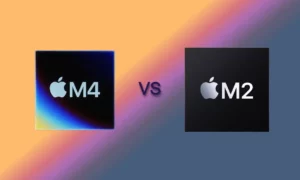Introduction
In the realm of modern technology, integrated circuits (ICs) stand as the cornerstone of innovation, powering everything from smartphones to supercomputers. Furthermore, the intricate process of manufacturing these ICs, known as semiconductor fabrication, is a symphony of science, technology, and precision. In this complex orchestration of elements, semiconductor fabrication plays a pivotal role in shaping the devices that drive our interconnected world.
This journey begins with a humble element, silicon, extracted from sand and transformed through a series of meticulously orchestrated steps. Let’s embark on a comprehensive exploration of the eight major steps that bring a semiconductor to life.
Follow us on Linkedin for everything around Semiconductors & AI
What is silicon Fabrication
Semiconductor fabrication, also known as integrated circuit (IC) manufacturing, is the process of creating semiconductor devices, typically integrated circuits (ICs) such as transistors, diodes, and capacitors, on a silicon wafer.
These devices are the fundamental building blocks of modern electronics, and they are used in a wide variety of applications, including computers, smartphones, televisions, and medical devices.
Read more: What is A Semiconductor Fab? – techovedas
1.Czochralski Growth: The Birth of the Silicon Ingot
The genesis of a semiconductor lies in the Czochralski method, a technique that transforms highly purified silicon into a cylindrical ingot, also known as a boule. In a carefully controlled environment, molten silicon is contained within a rotating crucible. A seed crystal, a small piece of high-purity silicon, is introduced into the molten silicon. As the crucible rotates, the molten silicon solidifies around the seed, gradually forming a cylindrical ingot, measuring several inches in diameter and several feet in length.
The Czochralski method, also known as Czochralski technique or Czochralski process, is a method of crystal growth used to obtain single crystals of semiconductors (e.g. silicon, germanium and gallium arsenide), metals (e.g. palladium, platinum, silver, gold), salts and synthetic gemstones. The method is named after Polish scientist Jan Czochralski, who invented the method in 1916.
2.Slicing:
The silicon ingot, now a testament to the Czochralski method, undergoes a slicing process that subsequently transforms it into thin wafers, the foundation upon which electronic circuits will be built. These wafers, typically around 200 microns thick, are meticulously polished to ensure a smooth, defect-free surface, providing a pristine canvas for the intricate steps that follow.
3.Cleaning: Ensuring a Pristine Canvas
Before embarking on the intricate circuit patterning process, the wafers undergo a rigorous cleaning process to remove any impurities or defects that could compromise the integrity of the electronic components. This process involves multiple stages, including chemical etching, deionized water rinsing, and spinning, ensuring a pristine surface for subsequent steps.
4. Oxidation: Creating an Insulating Layer
A thin layer of silicon dioxide, commonly known as oxide, grows on the wafer’s surface through a process called thermal oxidation. Moreover This oxide layer plays a crucial role in semiconductor fabrication, acting as an insulator that protects the underlying silicon and providing a base for the subsequent deposition of materials.
5. Photolithography: Transferring Circuit Patterns with Precision
Photolithography, a technique that ingeniously utilizes light, a photosensitive material called photoresist, and a carefully designed mask, transfers intricate patterns of electronic circuits onto the wafer. In this meticulous process, several steps come into play, each contributing to the precision and complexity of semiconductor fabrication. Moreover, these steps are crucial for achieving the desired functionality and performance of the semiconductor devices.
- Coating: The wafer undergoes a chemical change upon exposure to light, impacting the coated photoresist material.
- Exposure: The selectively exposed photoresist-coated wafer experiences ultraviolet light exposure through a mask, with the mask serving as a patterned barrier that permits light transmission in specific areas and impedes it in others.
- Developing:The chemical solution called a developer dissolves the exposed areas of the photoresist, while the unexposed areas remain intact. This process effectively transfers the circuit patterns onto the wafer.
6. Etching: Removing Material with Precision
The photolithography-defined exposed areas on the wafer undergo etching using either wet etching or dry etching techniques.
These techniques selectively remove the desired material, either through chemical reactions in wet etching or through physical bombardment in dry etching.
- Wet Etching: Moreover, in a chemical solution, the wafer undergoes a carefully formulated process that selectively removes material in the exposed areas, leaving the desired circuit patterns intact.
- Dry Etching: Additionally, A plasma or ion beam bombards and removes the material in the exposed areas, facilitating a precise and controlled etching process.
7. Doping: Tailoring Electrical Properties
It actively controls the electrical properties of the semiconductor material. This process involves introducing impurities, such as phosphorus or boron, into the silicon lattice.
Doping alters the number of free electrons or holes in the semiconductor, making it either n-type (excess electrons) or p-type (excess holes). Moreover These different doping levels determine the electrical behavior of the material, enabling the creation of various semiconductor components.
8. Metallization: Forming Electrical Interconnections
The final step in semiconductor fabrication involves depositing and patterning metal layers on the wafer. Additionally These metal layers, typically made of aluminum, copper, or gold, form the interconnects between the various components of the circuit, providing vital pathways for electrical signals to flow. This intricate process further enhances the wafer’s functionality, transforming it into a sophisticated electronic device.
Metal layers undergo deposition through techniques like physical vapor deposition (PVD) or chemical vapor deposition (CVD). Subsequently, a photolithography process, akin to circuit patterning, is applied to pattern these layers.
Read More: Hana Micron to Invest over $1 billion and create 4,000 jobs in Vietnam by 2025 – techovedas
Conclusion:
The eight major steps of semiconductor fabrication represent a harmonious symphony of science, technology, and precision, transforming a simple silicon wafer into the intricate circuitry that powers our modern world. Throughout this remarkable process, from the extraction of silicon from sand to the intricate patterning of circuits using light and chemicals, each step contributes to the creation of these sophisticated devices.
In essence, semiconductor fabrication is a journey of transformation, transforming humble silicon into the heart of our digital world. It is a process that demands expertise, precision, and innovation, shaping the very fabric of our technological advancements.



